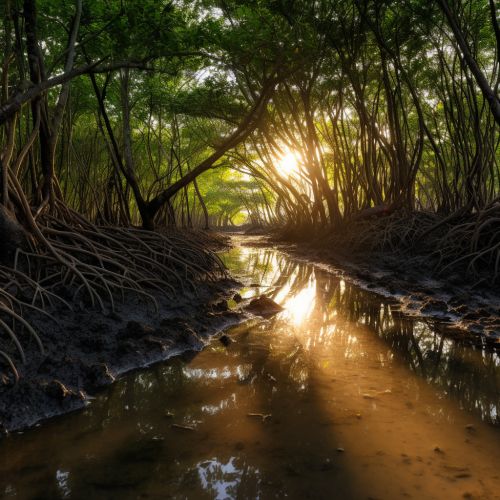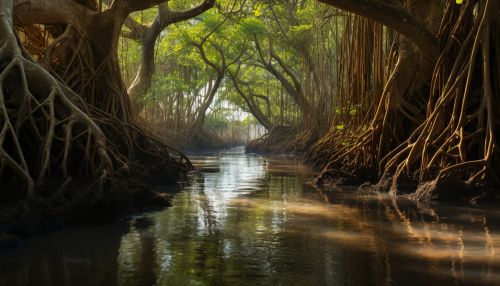Mechanisms of Carbon Sequestration in Mangrove Ecosystems
Introduction
Mangrove ecosystems are unique coastal environments that play a crucial role in carbon sequestration, a natural process that involves the capture and long-term storage of atmospheric carbon dioxide (CO2). This article delves into the mechanisms of carbon sequestration in mangrove ecosystems, providing a comprehensive understanding of the processes involved, the significance of these ecosystems in global carbon cycles, and the potential impacts of human activities and climate change.
Mangrove Ecosystems
Mangrove forests are found in the intertidal zones of tropical and subtropical regions. They are characterized by their dense network of roots, which provide a habitat for a diverse range of species and contribute to the stability of the coastline by reducing erosion. These ecosystems are highly productive and are known for their ability to sequester and store large amounts of carbon, often referred to as "blue carbon".
Mechanisms of Carbon Sequestration
The process of carbon sequestration in mangrove ecosystems involves several key mechanisms, including photosynthesis, sedimentation, and burial.
Photosynthesis
The primary mechanism of carbon sequestration in mangroves is photosynthesis. Mangrove trees, like all green plants, absorb CO2 from the atmosphere and convert it into organic matter, releasing oxygen in the process. This organic matter, often in the form of leaves, wood, and roots, constitutes a significant carbon pool.
Sedimentation
Mangrove ecosystems are highly effective at trapping and retaining sediments, which often contain organic carbon. This is facilitated by the complex root systems of mangrove trees, which slow down water flow, allowing sediments to settle. The trapped sediments are then buried over time, leading to the long-term storage of carbon.
Burial
The carbon stored in the sediments of mangrove ecosystems is often preserved for long periods due to slow decay rates. This is largely due to the anaerobic conditions in the water-logged soils, which limit the activity of decomposing organisms. As a result, the carbon is effectively locked away, preventing its release back into the atmosphere.


Significance of Mangrove Ecosystems in Global Carbon Cycles
Despite their relatively small global extent, mangrove ecosystems play a disproportionately large role in global carbon cycles. They are among the most carbon-dense ecosystems in the world, storing up to four times more carbon per unit area than terrestrial forests. This makes them a significant sink for atmospheric CO2 and an important component of efforts to mitigate climate change.
Impacts of Human Activities and Climate Change
Human activities, including deforestation, land conversion, and pollution, pose significant threats to mangrove ecosystems. The loss of mangroves not only reduces the capacity for carbon sequestration but also results in the release of stored carbon, contributing to greenhouse gas emissions. Similarly, climate change can impact mangrove ecosystems through sea-level rise, changes in temperature and precipitation patterns, and increased frequency and intensity of storms.
Conclusion
Understanding the mechanisms of carbon sequestration in mangrove ecosystems is crucial for the conservation and management of these important ecosystems. With their significant role in carbon sequestration, mangroves can contribute to climate change mitigation efforts. However, the ongoing threats from human activities and climate change underscore the need for effective conservation strategies to preserve these vital ecosystems.
